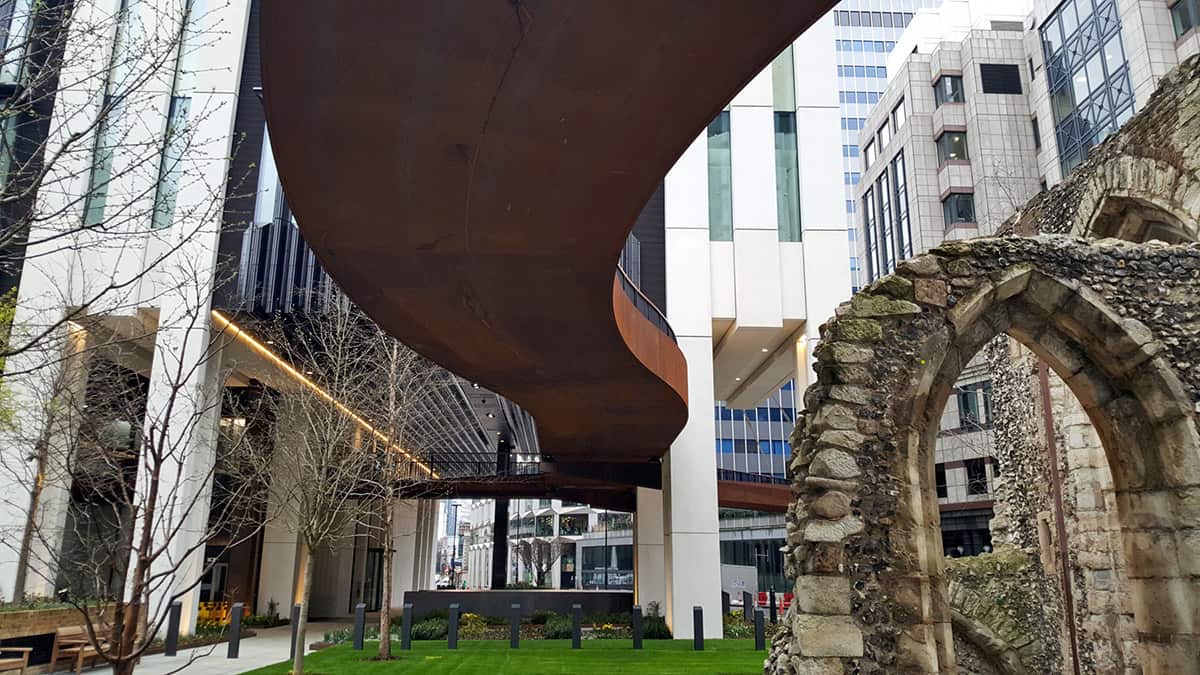Long maligned as bad planning done worse, the pedways are making a triumphant return to the City of London. Away with windswept concrete plazas that sat leaden upon the land and hello to filaments of steel dancing around buildings.
The genesis of their rebirth is the redevelopment of London Wall, the post-war vision of future office developments that became a byword for bad planning.
The pedways – elevated walkways for pedestrians – were not an entirely bad idea, borne out of a desire to separate dirty cars from people, but the implementation was, of necessity, badly carried out.
In the post-war years, the motor car was seen as the future, and a number of wide roads were planned, of which London Wall was one – but at the time, cars were also considerably more deadly to pedestrians. If you have four lanes of fast moving road traffic, the last thing you want are soft squashy humans trying to cross the roads.

Depending on your perspective, the pedways either elevated the pedestrians, or began a process of burying the roads in a future network of tunnels.
Unfortunately, the construction was haphazard. Only in a few places was enough redevelopment undertaken on a large enough scale to build a decent network of pedways. Elsewhere, patches appeared.
Walkways to nowhere, ending abruptly or simply never being opened up for use. Blank spaces where footbridges should have appeared remained blank for decades.
The pedways were designed by engineers at a time when it was thought that the future of urban planning meant controlling human behaviour.
Unfortunately, it seems that humans weren’t told about this and resolutely refused to behave as they were predicted to do. Rather than going up and down stairs to wide open plazas, they clung to narrow pavements, darting across wide roads and, all told, being a damn nuisance to the planners.
For the past 20-odd years, the network of elevated walkways around London Wall has been allowed to decay. Plants died off, the raised pub closed down, people started to avoid the space. The pedways could have been killed off, but London Wall remains an unforgiving chasm in the middle of the City that is as unwelcoming today as it was when built.
The new London Wall development was faced with an opportunity to do something with the pedways, and what they’ve built is marvellous.

Rather than trying to coral unwilling people skywards, they’ve accepted that people don’t like stairs, so widened the street level pavements instead. A slender bridge leaps across the road, tying the new buildings with the old highwalk that remains. A new walkway curves around the ruined church, now finally exposed and restored, accenting the stone building rather than constraining it as the old concrete box it was sat in managed to do.
Up here, among the highwalks, they’ve allowed the office block to overhang the space, creating shelter from the weather, but also ensuring that the decoration of the sides of the offices runs underneath.
Horizontal columns of black tiles ripple along the ceiling of the highwalk, ending suddenly to create entirely new combinations of angles and architecture.
We’re so used to elevated walkways being simply providers of access, a way to get from one side to the other, that the idea that they would be a destination in themselves is a strange one.
London’s pedways are back – and they are magnificent.
This piece was published as an excerpt from IanVisits. Read the full story online at ianvisits.co.uk.







